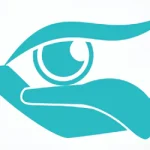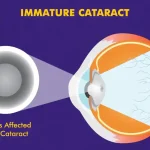Eyes are known as an extension of the brain. These two parts are connected by the optic nerve, a wire-like grouping of nerves, that transmits visual information from the eyes to the brain. Due to the optic nerve connection, the health of one body part often reflects another’s health. In several cases, headache occurs as a primary symptom for vision and other eye-related problems. Likewise, there are also cases of head diseases that can trigger problems in the eyes. What are the Eye Problems with Headache as a Symptom? Many eye diseases cause a headache as a symptom, some of them are common eye problems while others require an inspection of an expert eye doctor. Have a look at both the types. Trivial Eye Problems with Headache as a SymptomEye-straining: The medical term for eye-staining is Asthenopia. This eye problem is the result of intense use of the eye muscles, causing them to be tired. More of a symptom than an eye disease, asthenopia occurs when eyes are used for extended periods on digital screens, reading or exposed towards bright lights for long periods. The common signs noticed during eyestrain are headaches, teary eyes, dry eyes, redness in eyes, sore neck & back, itchiness in eyes and light sensitivity. The modern-day regime is also a reason for the eye-straining problem. Making necessary changes in the routine which provides necessary care and attention can prevent eye-straining. Farsightedness: Hyperopia or farsightedness is a common eye disease which blurs the vision for nearby objects, while the vision for the distance remains clear.

Eye-straining and pains around the eyes and the head are commonly noticed symptoms of this eye disease. Eyes have to work excessively in order to focus on the effect of farsightedness, which often results in headaches. This normal eye condition is prevented by the application of prescribed eyeglasses or contact lenses. Eye surgeries such as LASIK can help to get rid of hyperopia, permanently. Presbyopia: It is a natural eye-disease occurring commonly around the middle and old age. Presbyopia affects the vision while reducing the eyes’ ability to focus on nearby objects. This eye disease is one of the consequences of aging. Patients find challenges in reading and other focus requiring tasks. Headache is also one of the consequences of this disease, due to the intense use of the focus muscles of the eyes. Inspected by a general eye exam, it can be checked with the use of eyeglasses or contact lenses. Severe Eye Problems with Headache as a SymptomCorneal Disease: Keratoconus, Fuchs’ endothelial dystrophy, and bullous keratopathy are main corneal diseases. The primary causes of corneal disease can be a fungal and bacterial infection, aging, hereditary, contact lenses, etc. Symptoms of the corneal disease may include redness in the eye, light sensitivity, blurry vision, pain in the eyes, and nausea. Headache is also a major symptom for these diseases. The treatment of corneal diseases involves corneal transplant at the severe stages. While on early stages, the eye doctors can take easy measures to save the eyes from harsh effects such as vision loss. Acute Angle-closure Glaucoma: It is the only kind of Glaucoma which causes visual symptoms. It can be identified with symptoms like headache, harsh eye pain, nausea, blurred vision, and teary eyes.

Acute Angle-closure Glaucoma is the effect of increased intraocular pressure (IOP) inside the eyes. Once you notice the symptom of this disease, it is highly recommended to check with an eye care specialist. As glaucoma often has drastic consequences like optic nerve damage and vision loss. Read Also:Is Acute Glaucoma – An Inflammatory disease or not?Types of Head Diseases Leading to Eye ProblemsMigraines: A regular episode of migraine often cause problems in vision including flashing lights, rainbow effects, and blindness which is known as an aura. While ocular migraine, a type of migraine causes a vision loss or blindness in one eye for a short period. The visual symptoms of migraines disappear in short-time by themselves, no separate medical attention is required. Pseudotumor Cerebri: This disease is an after-effect of increased pressure on the skull known as intracranial hypertension in medical jargon. Thus, Pseudotumor Cerebri is also termed as Idiopathic intracranial hypertension. It often seems like a brain tumor, except there is no presence of a tumor. The major symptoms include headaches behind the eyes, blurred visions, ringing in the eyes, loss of vision, double vision, and light flashing. This disease usually occurs in obese women during their childbearing age. Pseudotumor Cerebri alarms intense dangers for the vision loss if left untreated. Treatment includes prescribed medication and surgeries. Conclusion Any problem whether related to the head or the eyes always requires a review of a specialist doctor. Make an appointment with your eye or head doctor to get a proper cure at the right time to keep the wellbeing of your vision and head balanced.





